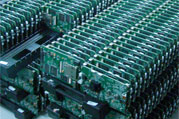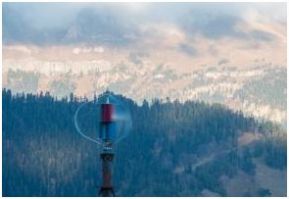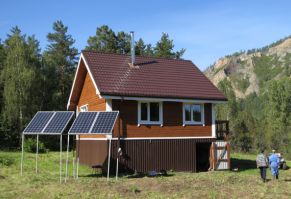Camera Battery Life and Speed of Operation.
At first glance, these are not related things. However, they are. Many experts note that most camera traps cannot immediately take another shot. And the reason is the Recovery time that is not mentioned in any manual or certificate for camera traps. During those seconds, the camera is launching, saving pictures on the memory card, reverse-switching, and activating PIR sensor. Manufacturers are aware of the problem of «reactivation» delays and evade the restriction by offering us a continuous shooting mode making 1 to 3-5 frames in a single operation. Reconyx took a step further with its cameras taking a set of up to 99 consecutive frames at 0.5 seconds interval. However, the company has it done only as a pseudo-replacement of a video recording function, Reconyx's camera traps have been missing until recently.
When standby mode is used, the camera traps consumes minimum power – 0.6 to 1.5 mW. Given the capacity of modern lithium batteries, the standby period can last for seasons. However, at the moment of shooting the camera trap's power consumption sharply increases and can reach 1.5A depending on the time of day. From the moment of activation until transition to the initial state (standby) the current consumption slightly changes averaging to 100-200 milliamps (except for the moments of night illumination). And here lies the most interesting thing – the shorter the recovery time, the less power is consumed. Given that the result is always the same – a picture on the memory card – the recovery time is critical parameter and directly affects the number of images captured on one set of batteries.
A battery is an expandable item and with this in mind we are making every effort to reduce the recovery time. During 2015 our Seelock camera traps showed a great improvement: new IR filters, new lens allowing very sharp image when shooting at night, the camouflage color became more appropriate for the Russians forests, a lot of changes in software. And the most important thing is that in 2015 we managed to reduce the Recovery time to a record of 3.6 seconds after the PIR sensor has been triggered.
For a visual comparison, we have tested popular models of the «peer» camera traps and once again saw the importance of the results achieved.
|
Camera model |
Single frame capturing, sec. |
Daytime current, A |
Power consumption per 1 daytime frame, A / h |
Night current, A |
Power consumption per 1 night frame, A/h |
Daytime frames, % |
Camera traps battery total capacity (Energizer Ultimate lithium; 2.6Ah 1.5V) |
Expected number of pictures on 1 set of batteries |
|
Seelock S128 |
3.6 |
0.18 |
0.00018 |
1.47 |
0.00147 |
50 |
7.8 |
24,319 |
|
Bolyguard MG983G-30M |
7.6 |
0.24 |
0.000507 |
1.08 |
0.00228 |
5.2 |
6,271 |
|
|
Bolyguard SG968K-10M |
9 |
0.17 |
0.000425 |
0.8 |
0.002 |
5.2 |
7,417 |
|
|
Bolyguard SG968D-12M |
9 |
0.16 |
0.0004 |
0.25…0.5 |
0.00132 |
5.2 |
8,470 |
|
|
LTL-Acorn 6310WMC |
7 |
0.17 |
0.000331 |
0.62…0.11 |
0.00064 |
7.8 |
17,902 |
Careful engineering solution, modern platform of Seelock camera traps allows us to improve the quality of the entire family of camera traps Seelock Spromise by simply altering the firmware without replacement of internal components.
Seelock Spromise camera traps can be updated in Sorokoput service centers for free.





 Solar-wind power system at weather station 'Dzhuga'
Solar-wind power system at weather station 'Dzhuga'
 ‘Cordon-200’ energysystematcordon Synzhul
‘Cordon-200’ energysystematcordon Synzhul



